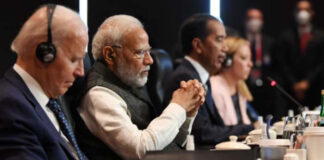OCTOBER 7, 2019
 Less than 1,000 new internet startups were launched in 2017 against more than 6,000 in 2016, according to Tracxn, and that number continued to decline in 2018 and 2019.
Less than 1,000 new internet startups were launched in 2017 against more than 6,000 in 2016, according to Tracxn, and that number continued to decline in 2018 and 2019.
In early 2018, Clip, a Bengaluru-based video content platform, was marked out as one of the most promising startups in a sunrise sector: social media or content. Clip (Transversal Tech Pvt. Ltd) had attracted a few million users and scores were signing up every day. The app allowed users to create, edit, and share 60-second video clips. Imagine TikTok, but slightly longer videos. The startup had received around $7 million from Shunwei Capital, Matrix Partners and India Quotient, and it was looking to raise another $25-30 million to accelerate its expansion.
However, after many months of discussions, Clip was turned down by every investor it approached. Finally, in a distress deal, it was bought by ShareChat (Mohalla Tech Pvt. Ltd), another social media platform, earlier this year.
What had caused Clip’s demise was the entry of Chinese content giants ByteDance and Kwai, which threw hundreds of millions of dollars to wow Indian users. Clip stood no chance against their financial might and technological expertise. Not just Clip, the threat posed by ByteDance, Kwai and other Chinese content platforms effectively ended investments into new content startups.
The rapid decline of Clip, and of investments into new content startups, illustrates the difficulties facing Indian internet companies.
Since 2017, overall investments into Indian startups have increased in value. Since the start of 2018, the number of unicorns, or startups valued at more than $1 billion, have nearly tripled. Mega-funding rounds have again become the norm at fast-growing startups.
But there is strong evidence to show that these numbers do not give an entirely accurate picture of the startup ecosystem. According to Tracxn Technologies Pvt. Ltd, a data analytics firm, the number of startup deals, in fact, decreased in 2017 and 2018, from the respective year-ago periods. Deal volume has again dropped sharply this year. What’s more, even the number of new startups launched has decreased sharply in the same period, and it is down again this year. Less than 1,000 new internet startups were launched in 2017, from more than 6,000 in 2016, according to Tracxn, and that number continued to decline in 2018 and 2019. These data point to a startling possibility: internet entrepreneurship is on the decline in India. It is certainly not mushrooming without fetters, as is commonly believed.
REALITY CHECK
The decline in the overall deal volume and in new startup formation is linked and it is caused by many factors, investors and entrepreneurs said. One obvious reason is the threat posed by large Chinese and American internet firms. Whenever an established foreign internet firm—Amazon, Uber and ByteDance are the most prominent examples in this decade—enters a sector, the number of local startups shrink. Usually, there are survivors such as Flipkart, Ola and ShareChat that continue to thrive. But the space for others shrinks dramatically.
“If American and Chinese internet companies enter a sector, it spells trouble for Indian startups,” said a partner at a venture capital firm. “These companies have huge capital, tech expertise and the knowledge of how to scale—it’s very hard for a local startup to compete. When these kinds of companies are involved, investors get scared of backing rival companies and it becomes less likely that new founders will come into that space.”
There are other reasons also. Because of network effects, as internet platforms expand, it becomes increasingly difficult for a newcomer to beat incumbents as long as the latter keep innovating and improving their service. In e-commerce, for instance, Flipkart and Amazon have consistently grown faster than most of their smaller rivals despite being far bigger. In cab services, Ola and Uber enjoy a virtual duopoly. In hotel brands, Oyo, on account of its spectacular fundraising spree, has left little space for other firms. In these sectors, and others, investors are unlikely to fund new startups that seek to compete with firms that have established hegemony. Because of this dynamic, funding in each sector has become concentrated in a small number of successful startups, damaging competition.
Some experts also believe that the fall in deal volume shows that the startup ecosystem is starting to become more realistic about the potential of the consumer market. For instance, several of the most successful entrepreneurs, including Freecharge founder Kunal Shah and Myntra founder Mukesh Bansal, have chosen to launch ventures that specifically cater to high-income users in urban areas. Shah’s new startup Cred serves only credit cards, while the fitness and food offerings by Bansal’s venture CureFit carry prices that only the well-off can afford to pay. The decision by these entrepreneurs to enter niche businesses and ignore the mass market was driven by their belief that India’s consumer internet market is concentrated in the urban areas and is likely to be so for many years to come.
Unlike internet markets such as the US and China, which saw unabated expansion in their early years, India’s consumer internet market has grown in spurts with periods of steep slowdown in between. Its growth has continually fallen short of investor expectations.
India had 451 million monthly active internet users as of March 2019, making it the second-biggest market after China, according to a September report by the Internet and Mobile Association of India. But, only a small fraction of this user base has substantial disposable income, a fact that has often been underplayed by analysts. “Why should the deal volume increase—it is unrealistic to expect that,” Cred’s Shah said. “If volumes are decreasing, it’s a sign that as an ecosystem we are becoming more realistic about the market size and potential. For too long, we’ve had overoptimistic estimates about the market. The fact is that India’s consumer market is far more shallow (than what the consensus is in the startup ecosystem).”
THE BRIGHTER SIDE
That said, what has improved significantly in the past four years is both the “quality” of entrepreneurs and the strength of startup ideas, Shah added. “The average age of founders has increased. It’s no longer kids out of college who are starting up. There are many second-time entrepreneurs, people who have worked at startups before, and, in general, you can see that founders as a group are far more serious. The ideas that are emerging are better thought out. These are very healthy indicators.”
Dev Khare, partner at Lightspeed, a VC fund, pointed out that as many as 70% of founding teams that go on to receive Series A funding now have prior experience of working at an internet startup. As employees of older internet companies such as Flipkart, Myntra, Ola and Freshworks leave to start their own firms, their startup experience helps them expand faster and make fewer mistakes. “This is one of the main reasons why the quality of entrepreneurs has improved by leaps and bounds. Ten years ago, many founding teams came from various sectors like FMCG, financial services, etc. Now, almost every founding team has members who have worked before at an internet startup. So, while the overall deal volume may have gone down, the number of quality founding teams has certainly increased,” Khare said.
The deeper knowledge and startup experience of founding teams has also been complemented by a similar shift in the venture ecosystem. In the 2015-16 period, when deal activity was at its peak, many inexperienced angel investors had poured cash into early-stage internet companies. Most of these bets turned sour and angel investors fled the scene. Early stage funding is now dominated by a handful of institutional firms, which invest far more conservatively. This shift is the single biggest reason contributing to the fall in deal volume, compounded by the fact that the number of prolific venture funds in India hasn’t increased substantially in the past three years.
“People have now figured out that the startup game is not for everybody,” said Anand Lunia, founding partner at India Quotient, a VC firm. “Hordes of random people had started up and many of them haven’t gone anywhere. The angels who were throwing money at these firms have also vanished. At the same time, the cash raised by both local and international institutional funds has increased significantly. So, now, it’s not as if everybody is starting up or becoming an angel investor. There’s been a flight to quality on both fronts.”
In many aspects, the internet economy in India has become stronger and broader as internet connectivity has improved and the number of internet users has increased, investors said. Upcoming sectors such as fintech and social commerce have led to a broadening of the consumer internet market and increasing adoption of the internet by small and large businesses alike has allowed sectors such as business-to-business (B2B) e-commerce and logistics to become stronger.
“In 2015, it was only e-commerce, cabs, hotels and hyperlocal,” Lightspeed’s Khare said. “Now, in addition to these sectors, you have social commerce, fintech, social media, mobility on the consumer side. On the B2B side, there’s SaaS (software as a service). A few years ago, there were very few SaaS deals. Now, there are also large investments going into B2B marketplaces, B2B logistics and B2B financial services.”
EXITS HOLD THE KEY
While deal volume has dropped sharply over the past three years, exits for VCs have, however, touched new highs. In May 2018, Walmart agreed to pay $16 billion for a majority stake in Flipkart, enriching the latter’s investors such as Tiger Global, SoftBank, Naspers and Accel. Secondary share sales between investors, however, have been the main source of startup exits. Such sales ensured that VCs earned about $2.8 billion in 2017, up from $1.8 billion in 2016, according to data supplied by Venture Intelligence. Exits may exceed $4 billion this year.
But investors said deal volume may continue declining until Indian startups can pull off successful initial public offerings (IPOs). That task seems to have become tougher than ever after the poor market debut in the US of Uber, and the shelved listing of WeWork. Many Indian unicorns have pursued a growth-at-all-cost strategy, similar to that of Uber and WeWork, and are nowhere near attaining profitability. This makes a big bang IPO by an Indian consumer internet firm an unlikely prospect for the near future.
“Many of the new unicorns are not ‘exitable’. Their margins are really bad and they will have to go through serious restructuring (to launch an IPO). This will make it very challenging for investors at such startups to get big exits,” Lunia said. With exits remaining hard, and generating a profit still remaining a distant dream for many startups, the wave of ongoing consolidation and shifts in favour of a few giant players is only likely to get stronger.
Note: The opinions in this article are the author’s, as published by our content partner, and do not represent the our views.











































































































